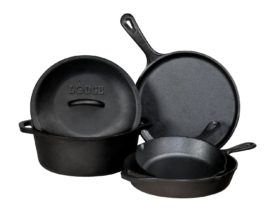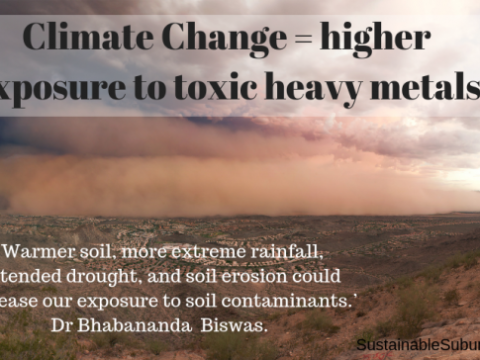Last updated on July 26th, 2021 at 07:29 pm
Today I have a guest post from Consumer Rights Investigator and Advocate, Lindsey Pasieka.
Hi everyone! Today I wanted to talk about some lesser known toxic ingredients that are found in everyday items. We’re all used to searching for home and child-safe cleaning products, and we blanch at the idea that people used to buy kid’s toys containing lead.
But that doesn’t mean the fight for safe products is over! So here are three ingredients that you can still find in many homes, with tips for safer alternatives.
Talcum Powder
Where it’s Found: Baby Powders, shower powders, moisturizers, bath bombs, lotions, shampoos, powdered makeup
Why it’s Dangerous: Since the 1970s, multiple studies have show a correlation between prolonged talcum powder use and ovarian cancer. Not only that, but in it’s natural state, talc often grows right along with asbestos, which can even contaminate makeup-grade talc! While both the U.S. government and the Cancer Council of Australia have dismissed the link, lawsuits against talcum powder producers continue to show evidence to the contrary.
What You Can Do: In many baby powders, talc has been replaced with cornstarch, and guess what? It works just as well!! You can find talc-free bath bombs and moisturizers just by checking the ingredient list at the grocery store. Or, take a DIY route. Here’s a homemade Bath Bomb recipe that is kinder to your sensitive areas.
Teflon (and Similar Coatings)
Where It’s Found: Nonstick pot and pan coatings
Why It’s Dangerous: Teflon is actually the brand name for a serious of chemicals known as PFAS, or perfluorinated compounds. Over 200 scientists have confirmed PFAS to be carcinogenic.
It can hurt you in 2 ways. First, if you scratch a pan and end up consuming the particles with your food. But also, the particles are released when exposed to heat, even for as few as 5 minutes on the stove. Not a great quality for a pan.
What You Can Do: There are TONS of options out there that don’t use Teflon. If you truly love traditional nonstick pans, look for ones that say PFAS-Free on the label. You can also use hard anodized cookware— my personal favorite.
Unfortunately, Teflon isn’t the only danger in cookware. Here are a few other things to keep in mind when you are evaluating pots and pans:
- Make sure to only use hard anodized aluminium. Regular aluminium can leach into your foods, causing major health issues. Even with anodized, make sure that there are no scratches, which could expose the aluminium beneath.
- Also, replace your pots when necessary, as long-term use, especially cooking with acidic foods, can deanodize your cookware.
- New copper cookware can be used, but again, is subject to health issues. Make sure your pans are in good condition, and replace older cookware, especially if you see copper flakes or scratches, which can result n copper particles in your food. Older copperware is likely coated with tin or nickel and should definitely be avoided.

[editor’s note: My fav is my cast iron! I have talked about better cookware choices before.]
Glyphosate
Where it’s Found: Herbicides
Why it’s Dangerous: Glyphosate exposure has been linked with kidney and liver issues, and was recently added to California’s list of probable carcinogens.
People in homes near herbicide plants have suffered severe illnesses from water contamination. Plus, this herbicide is sprayed directly on many agricultural products, and is hard to get off them completely, so it can end up in your food in trace amounts!
What You Can Do: Well, for starters, don’t use a glyphosate-containing weed killer in your home. There are tons of eco-friendly herbicide options out there. You can also check out DIY methods, like companion planting, to help decrease weed growth.
Regarding food products, there isn’t enough evidence to say whether the trace amounts of glyphosate are dangerous. But legal action is ongoing- so stay tuned and stay informed!
Really, that is the biggest thing: Stay informed. The more you know, the more you can advocate for yourself, your community, and consumers as a whole. Did these toxic ingredients surprise you? How will you advocate for consumer safety? Let us know in the comments!
 Lindsey Pasieka works as a Consumer Rights Investigator and Advocate for ConsumerSafety.Org. She combines her passion for writing with a deep-seated need to help keep others informed. In her spare time, she volunteers for animal rescue and reads YA novels into the wee hours of the morning.
Lindsey Pasieka works as a Consumer Rights Investigator and Advocate for ConsumerSafety.Org. She combines her passion for writing with a deep-seated need to help keep others informed. In her spare time, she volunteers for animal rescue and reads YA novels into the wee hours of the morning.



